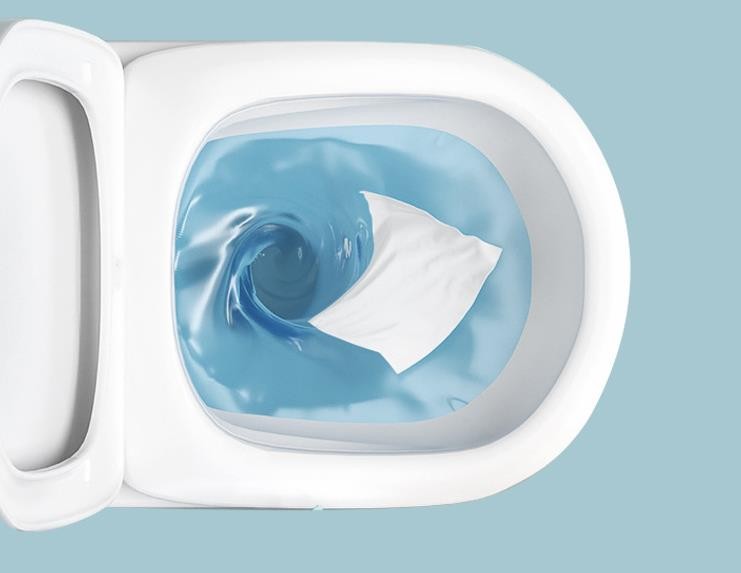Dispersible wipes refer to wet wipes that can meet the use requirements and do not affect the smoothness and ecology of the whole sewage pipeline after being discarded into the toilet. This paper mainly introduces the processing technology of flushable wet wipes, including mesh forming process and reinforcement process.
Flushable wet wipes' netting processes mainly include carding, air flow and wet netting. At present, the wet netting and Spunlaced reinforcement process is the fastest-growing and most used in the world.
Carding and netting generally require a long fiber length, and functional fibers are mostly used in production. With the continuous improvement of the requirements of the washable standard, the products sorted into a network are difficult to pass the washable test, and the washable products produced by this process have been gradually eliminated by the market.
Airflow netting is to convey the combed single fibers to the receiving curtain through airflow, and finally form a fiber network. Compared with carding into a net, its fiber arrangement is more random, and its mechanical properties basically show isotropic characteristics.
Wet netting is similar to papermaking. Beating the fiber and water in a certain proportion in a beater to form a slurry, which is then evenly coated on the mesh curtain. After removing excess water, a fiber web is formed. Among the three netting processes, the wet netting process uses the shortest fiber length and relatively good uniformity.

The fibers prepared by the above three netting methods also need to go through the most important process, that is, strengthening the fiber mesh, so that flushable wet wipes not only have good wet usability, but also have washability. At present, the commonly used reinforcement processes mainly include chemical bonding, thermal bonding and Spunlaced.
The key of chemical bonding and strengthening technology is to use special adhesives. This method requires that the adhesives can be dissolved under the shear erosion of water flow and the fibers can be dispersed. The type of adhesive used plays a decisive role in the dispersibility of the product, and the safety and irritation of chemical reagents are also the key points to be considered.
The reinforcement process of thermal bonding method is to mix a small amount of fibers that can be heated and melted with cellulose, and melt the fibers through hot rolling or hot air heating, so that the cellulose fibers can be bonded and reinforced. Fibers that can be heated and melted usually include es fibers, polylactic acid fibers (PLA), polyethylene fibers and polypropylene fibers. However, hot melt fibers usually do not meet the requirement of 100% biodegradability. If used in large quantities, non degradable fibers will accumulate in the sewage treatment system, increasing the burden of sewage treatment. However, with the development of biodegradable PLA, poly (butylene terephthalate adipate) (PBAT) and other materials, there will also be a good development space for fully degradable materials by thermal bonding.
Spunlaced reinforcement can reinforce the fiber net formed by the above three netting methods. It uses high-pressure water jet to spunlace the fiber net, and the fibers in the fiber net shift under the puncture of water jet. At the same time, under the blocking effect of the trawl curtain, part of the water jet ejects and punctures the fiber net again, causing the fibers to displace, hug and wind each other, and strengthening the fiber net. Spunlaced reinforcement is a kind of physical flexible reinforcement, which does not damage fibers and has higher product safety. The spunlaced reinforcement method needs appropriate spunlaced process parameters to ensure the low loss rate in the production process and the appropriate entanglement of ultra short fibers, and the final product has appropriate wet strength and washability.

Since the outbreak of covid-19, the amount of wet wipes used for cleaning, sanitation and disinfection has increased rapidly. With the increasing consumption of disposable sanitary products, it not only brings people a healthy and convenient life, but also slowly causes some environmental problems. Especially since the invention and marketization of flushable wet wipes, how to better adapt to the use scenarios and meet the requirements of municipal drainage facilities such as drainage pipelines has increasingly become the focus of the market.
Comment(0)
You can comment after
SIGN IN